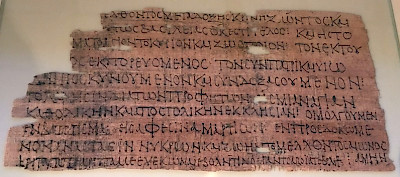Creed
Creed (from Latin credo, “I believe that”): short summary of the Christian beliefs.

Early Christianity had been a halachic movement within Judaism, which had accepted non-Jewish members. At first, these non-Jewish Christians must have accepted Christ as one of their many gods; for example, it is documented that the emperor Severus Alexander worshiped "Apollonius, Christ, Abraham, Orpheus, and others of this same character".note
Within Christianity, there was a tendency to exclusivism: one should only worship Christ and should not recognize other deities. This exclusivist branch of Christianity became dominant and was faced with a new question: how to combine the gospel stories about a very human Christ and theological views of a divine Christ? This question would eventually be solved by accepting that Christ had two natures, a human and a divine one.
During the Council of Nicaea (325 CE), the new doctrine was laid down in a document to which all Christians had to subscribe. Starting with the words “I believe that” (credo in Latin), it laid down the correct way to describe the two natures of Christ, the exact relation between the three persons of the divine Trinity, and the belief in resurrection, Last Judgment, and paradise.
Int he course of the fourth century, the emperors were less interested in orthodoxy, but Theodosius reinforced it at the Council of Constantinople in 381. Although it is often called the Nicene Creed, it was introduced in its present form during the Constantinople council and adapted at the Council of Chalcedon (451).